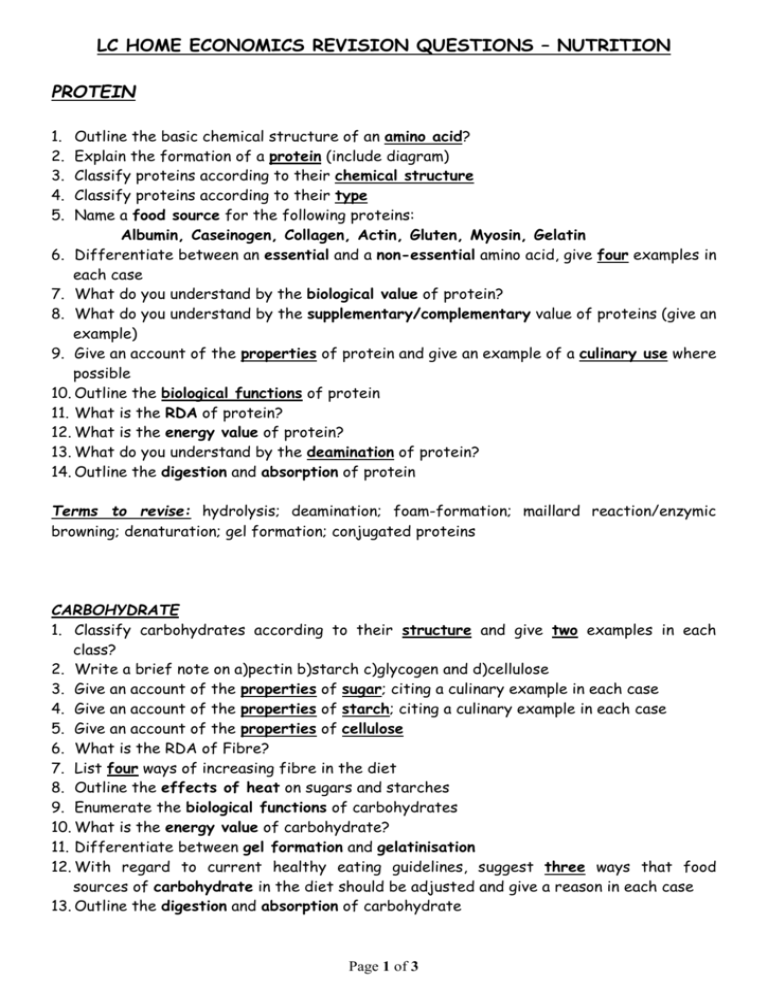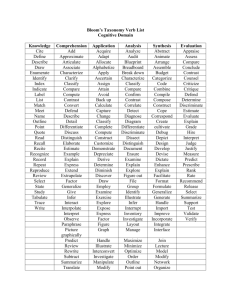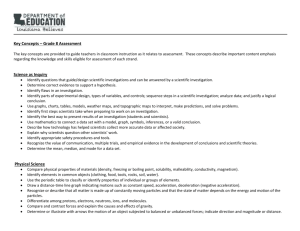carbohydrate
advertisement

LC HOME ECONOMICS REVISION QUESTIONS – NUTRITION PROTEIN 1. 2. 3. 4. 5. Outline the basic chemical structure of an amino acid? Explain the formation of a protein (include diagram) Classify proteins according to their chemical structure Classify proteins according to their type Name a food source for the following proteins: Albumin, Caseinogen, Collagen, Actin, Gluten, Myosin, Gelatin 6. Differentiate between an essential and a non-essential amino acid, give four examples in each case 7. What do you understand by the biological value of protein? 8. What do you understand by the supplementary/complementary value of proteins (give an example) 9. Give an account of the properties of protein and give an example of a culinary use where possible 10. Outline the biological functions of protein 11. What is the RDA of protein? 12. What is the energy value of protein? 13. What do you understand by the deamination of protein? 14. Outline the digestion and absorption of protein Terms to revise: hydrolysis; deamination; foam-formation; maillard reaction/enzymic browning; denaturation; gel formation; conjugated proteins CARBOHYDRATE 1. Classify carbohydrates according to their structure and give two examples in each class? 2. Write a brief note on a)pectin b)starch c)glycogen and d)cellulose 3. Give an account of the properties of sugar; citing a culinary example in each case 4. Give an account of the properties of starch; citing a culinary example in each case 5. Give an account of the properties of cellulose 6. What is the RDA of Fibre? 7. List four ways of increasing fibre in the diet 8. Outline the effects of heat on sugars and starches 9. Enumerate the biological functions of carbohydrates 10. What is the energy value of carbohydrate? 11. Differentiate between gel formation and gelatinisation 12. With regard to current healthy eating guidelines, suggest three ways that food sources of carbohydrate in the diet should be adjusted and give a reason in each case 13. Outline the digestion and absorption of carbohydrate Page 1 of 3 Terms to revise: adipose tissue; caramelisation; gelatinisation; pectin; NSP; peristalsis; gel formation; dextrinisation; hygroscopic; crystallisation; invert sugar; hydrolysis; glycogen; reducing sugar; starch; photosynthesis; empty kilocalories LIPIDS 1. Outline the chemical composition and structure of a triglyceride 2. List the elements found in lipids 3. Classify lipids according to their structure and give two examples in each class (saturated/monounsaturated/polyunsaturated) 4. Differentiate between a mono-unsaturated fatty acid and a poly-unsaturated fatty acid 5. Classify lipids according to their source 6. Differentiate between a cis and a trans fatty acid and give one source in each case (include diagram) 7. Write a concise note on omega 3 fatty acids (include food sources) 8. Explain the properties of lipids, citing a culinary example where possible 9. Enumerate the biological functions of lipids 10. What is the energy value of a lipid 11. How much of our daily energy requirements should be derived from lipids? 12. List five methods of reducing fat in the diet 13. Outline the digestion and absorption of lipids Terms to revise: Rancidity (oxidative & hydrolytic); antioxidant; emulsion; emulsifier; lecithin; stabilizer; plasticity; adipose tissue; slip point; smoke point; flash point; hydrogenation VITAMINS 1. Write a concise note on vitamins under the following headings: Vitamin A; D; E; K; C; B1; B2; B6; B12; folate (folic acid) Sources/functions/effects of deficiency/properties/RDA (no RDA for B1; B2; B6) 2. Differentiate between fat-soluble and water soluble vitamins 3. Differentiate between Retinol and carotene 4. What is hypervitaminosis? 5. Write a concise note on i) Rickets ii) Osteomalacia iii) osteoporosis 6. What do you understand by the term fortification? 7. Name the antioxidant vitamins? 8. Write a brief note on i) Beriberi and ii) pellagra 9. Explain the importance of folic acid in the diet of pregnant women? 10. What is scurvy? 11. Why are vegan products often fortified with vitamin B12? 12. Write a note on vitamin/mineral inter-relationships Terms to revise: Hypervitaminosis; beriberi; pellagra; scurvy; anaemia; spina bifida; metabolism; offal Page 2 of 3 MINERALS 1. Write a detailed note on minerals under the following headings Mineral: Calcium; Iron; Zinc; Iodine; Potassium; Sodium Sources/functions/effects of deficiency/RDA 2. What is calcification? 3. Why is it important to have a high intake of calcium in the early years of life? 4. What vitamin is necessary for the absorption of calcium? 5. Outline the factors that a) assist and b) hinder the absorption of calcium 6. (Outline the effects of phytates and oxalates on the absorption of calcium) 7. List four factors that contribute to osteoporosis? 8. Bone is not a ‘static tissue’ Explain what you understand by this statement 9. Differentiate between haem and non-haem iron & give two examples of each 10. Write a concise note on anaemia, refer to i) causes ii) effects/symptoms 11. iii) corrective measures 12. Enumerate the factors that a) assist and b) hinder the absorption of iron 13. What vitamin is necessary for the absorption of iron 14. What are the effects of excess iron intake on the body? 15. What is Goitre? 16. Define metabolism? Which gland in the body controls metabolism? 17. List six ways to ensure maximum vitamin/mineral retention during the preparation and cooking of food? Terms to revise: Calcification; osteoporosis; Goitre; Phytic acid/phytates; oxalic acid/oxalates; metabolism WATER 1. Outline the general properties of water 2. Enumerate the biological functions of water 3. What is the RDA of water? Terms to revise: Hydrolysis; solvent; metabolism Page 3 of 3






